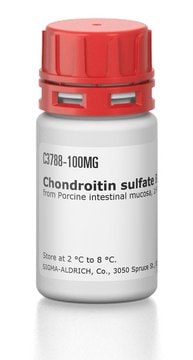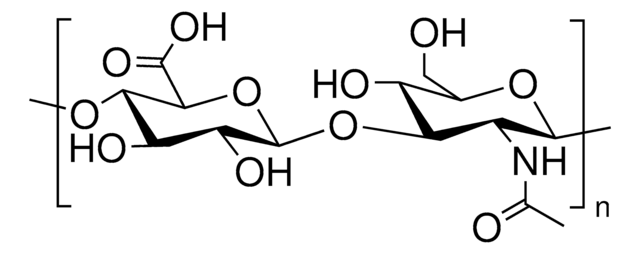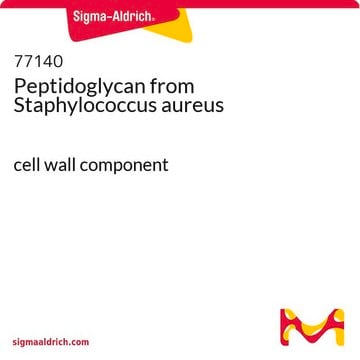The stability of stock solutions of this enzyme has not been evaluated. However, it is cited in Methods in Enzymology, 165, 3-7 (1988) that at concentrations greater than 2 mg of protein per ml it can be stored at -20 °C without loss of hemolytic titer.
H9395
α-Hemolysin from Staphylococcus aureus
lyophilized powder, Protein ~60 % by Lowry, ≥10,000 units/mg protein
Sinónimos:
α-Toxin
Seleccione un Tamaño
432,00 €
Seleccione un Tamaño
About This Item
432,00 €
Productos recomendados
origen biológico
Staphylococcus aureus
Nivel de calidad
Formulario
lyophilized powder
actividad específica
≥10,000 units/mg protein
contiene
sodium citrate buffer as balance
composición
Protein, ~60% Lowry
solubilidad
H2O: soluble 0.49-0.51 mg/mL
Nº de acceso UniProt
temp. de almacenamiento
2-8°C
Información sobre el gen
Staphylococcus aureus ... SAOUHSC_01121(3920722)
Descripción general
Aplicación
- as a component of electrolyte solution for testing pore formation in lipid bilayer using electrophysiological measurements[2]
- to test its osteogenesis suppressive effects in bone marrow stromal cells (BMSCs)[3]
- in the preparation of α-hemolysin molecular imprinted polymer (MIP) for Biacore and surface plasmon resonance[4]
Acciones bioquímicas o fisiológicas
Envase
Definición de unidad
Palabra de señalización
Warning
Frases de peligro
Consejos de prudencia
Clasificaciones de peligro
Eye Irrit. 2 - Skin Irrit. 2 - STOT SE 2
Órganos de actuación
Lungs,Blood
Código de clase de almacenamiento
11 - Combustible Solids
Clase de riesgo para el agua (WGK)
WGK 3
Punto de inflamabilidad (°F)
Not applicable
Punto de inflamabilidad (°C)
Not applicable
Equipo de protección personal
Eyeshields, Gloves, type N95 (US)
Elija entre una de las versiones más recientes:
Certificados de análisis (COA)
¿No ve la versión correcta?
Si necesita una versión concreta, puede buscar un certificado específico por el número de lote.
¿Ya tiene este producto?
Encuentre la documentación para los productos que ha comprado recientemente en la Biblioteca de documentos.
Los clientes también vieron
Contenido relacionado
Cell lysis and protein extraction methods overview various techniques, from detergent solubilization to mechanical disruption, supporting research needs.
Los métodos de lisis celular y extracción de proteínas abarcan varias técnicas, desde la solubilización de detergentes hasta la ruptura mecánica, que respaldan las necesidades de investigación.
-
We suspended in the product H9395 in 12.5 ml of PBS (our usual water-based infection solvent), flash-froze the aliquots in liquid nitrogen, and stored the aliquots at -80 C. There was no apparent issue with resuspension in PBS vs water. However, we observed no hemolytic activity in our in vivo mouse study or an in vitro quantitative hemolysis assay performed with rabbit blood.
1 respuesta-
¿Le ha resultado útil?
-
Filtros activos
Nuestro equipo de científicos tiene experiencia en todas las áreas de investigación: Ciencias de la vida, Ciencia de los materiales, Síntesis química, Cromatografía, Analítica y muchas otras.
Póngase en contacto con el Servicio técnico
















